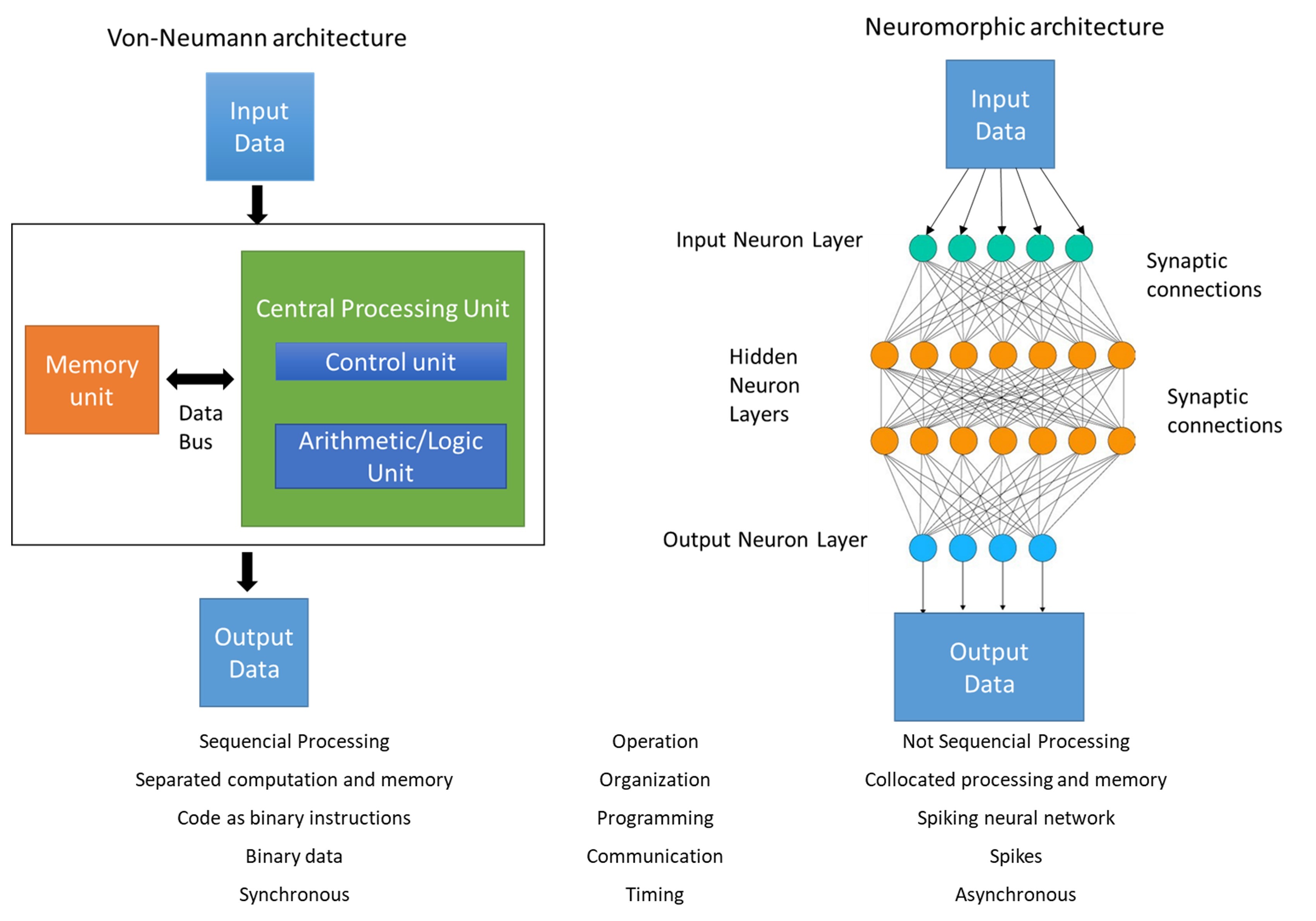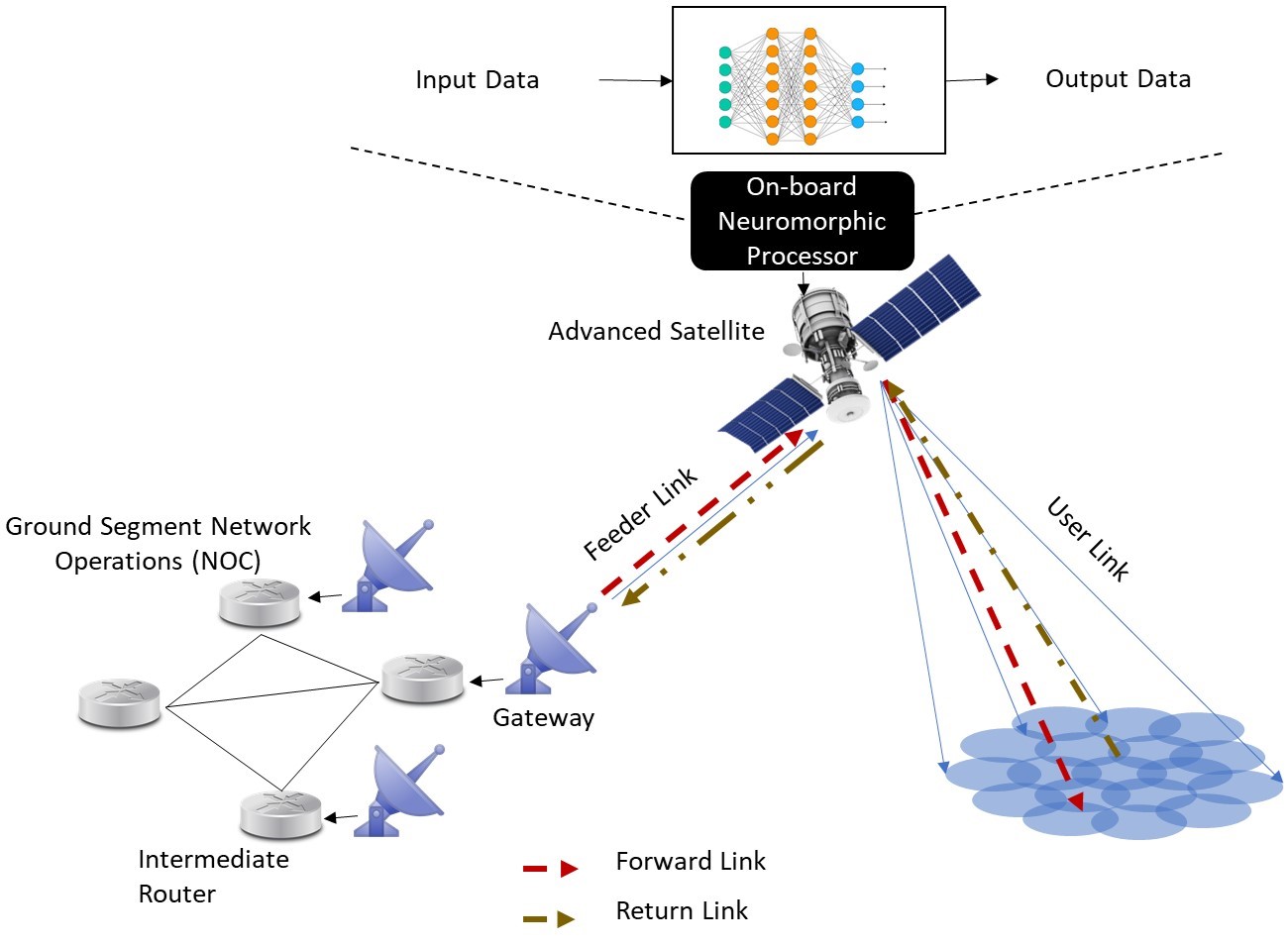
-
StatusOngoing
-
Status date2022-05-17
-
Activity CodeFPE 1A.114
The NeuroSat project aims to study and demonstrate the feasibility of using NP and Spiking Neural Networks (SNN) for SatCom operations, taking into account different aspects:
-
Conduct a comprehensive survey of the current NP hardware and software technologies and assess their applicability to SatCom applications
-
Identify potential SatCom applications for the use of neuromorphic processors. Identify SatCom applications that could benefit from an NP-based implementation while listing other space applications outside the SatCom domain where NP use has been shown to have potential.
-
Compare the performance and implementation of one of the identified SatCom applications when running on standard processor solutions with NP in terms of accuracy, latency, and efficiency.
-
Outline the design of a future proof-of-concept demonstrator for the viable SatCom applications identified in Task 2 (suitable for realization through a future ARTES activity). Identify the main advantages and disadvantages of using an NP for the identified applications, focusing on (i) the small satellite/cube-sat (CubeSats) mission class and (ii) the GEO mission class.
-
Provide a systematic view of the identified technology gaps to implement the defined NP design.

AI has proven to provide innovative tools to help automate a wide range of development and operations processes on SatCom. However, conventional AI-accelerated hardware technology may not meet the computational efficiency and energy resources required. In this context, neuromorphic computing presents itself as a promising solution for implementing AI modules onboard future communication systems due to its low power consumption and its design for the training and inference of ML models requiring high computational parallelism.
The main challenge in this project is to identify problems in AI-based satellite communications that could benefit from the use of Neuromorphic processors and SNNs.
Traditional processors rely on the von Neumann architecture, which is characterized by the separation of memory and computing. As a result, large part of the energy consumption of the processor is due to the transfer of information between memory and computing. Furthermore, standard computing platforms implement silicon-based logic gates -- transistors -- that have evolved at a rapid pace over the last decade, shrinking to unimaginably small sizes.
In this context, bio-inspired neuromorphic processors (NPs) are a promising alternative to work as efficient co-processors for ML applications involving temporal signals and/or requiring continual adaptation. Unlike conventional processors that operate in batch mode, i.e., accumulating many samples before processing them, NPs can process in a streaming fashion. Thanks to their energy efficiency and continuous onboard adaptability, NPs represent an excellent opportunity to unlock the potential benefits of AI solutions for SatCom systems. Furthermore, the implementation of NPs can leverage non-volatile memory devices based on beyond-CMOS technologies.
NeuroSat intends to investigate the application of NP architectures in SatCom systems, focusing on AI-based solutions that can benefit from the use of NP in terms of performance, reliability, power consumption or cost of SatCom payloads. In this sense, candidate scenarios to be evaluated during the project are presented:
-
Digital Beamforming
-
Interference Detection
-
Flexible Payload Allocation in Presence of Interference
-
Congestion Prediction
-
Precoding Matrix Calculation
-
Frequency plan Optimization and Interference Mitigation
-
Image processing for Earth observation
-
Autonomous landing system
The system features will depend on each of the evaluated scenarios. During the project the most suitable candidates will be selected according to the established KPIs.
The specific system architecture will depend on the use case selected during the project. However, the target is to achieve an advanced satellite architecture where the ML block interference and/or training is performed onboard the satellite using a NP with low power consumption.

The NeuroSat project started on May 3, 2022 and has a duration of 9 months. NeuroSat consists of 5 technical work packages plus an additional work package for project management.

Started




